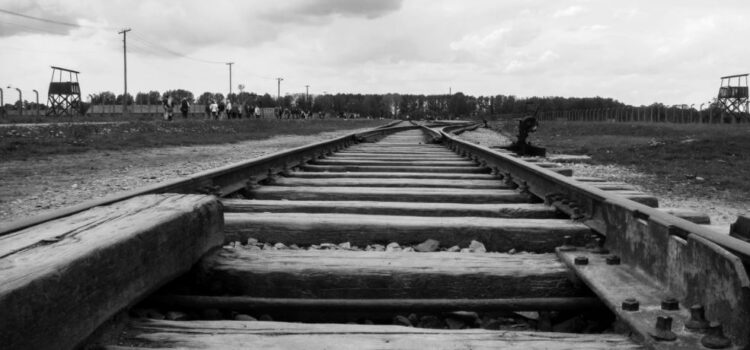
This is a free excerpt from one of Shortform’s Articles. We give you all the important information you need to know about current events and more.
Don't miss out on the whole story. Sign up for a free trial here .
What causes a train to derail? How common are train derailments in the U.S.?
On February 3, a 150-car, Norfolk Southern freight train carrying vinyl chloride derailed in Ohio, sparking a massive fire and sending toxic gasses into the air. For years, rail unions have sounded the alarm that freight rail companies’ “speed over safety” mentality and drastic workforce cuts would lead to disaster.
Read on to learn more about what causes a train to derail, including why derailments are happening more often in the U.S.
What’s Behind Recent Train Derailments?
On February 3, a 150-car, Norfolk Southern freight train carrying vinyl chloride—a hazardous, flammable chemical—derailed in Ohio, sparking a massive, days-long fire and sending toxic gasses into the air. So, what causes a train to derail? How has lax government regulation of big rail companies contributed to the problem? What does the future hold for rail workers’ and Americans’ safety? We’ll explore these questions in this article.
The Ohio Train Derailment
The Ohio train derailment earlier this year left some 5,000 East Palestine residents and countless more metropolitan area residents within 40 miles, under air and water contamination alerts. According to federal officials, this train was not regulated as a “high-hazard flammable train.”
So, how common are train derailments in the U.S.? More than a dozen trains have derailed in the U.S. since January. Rail unions claim that derailments and accidents are on the rise, and experts say that weak government regulations have turned trains into hazardous materials-carrying death-delivery machines—endangering rail workers and communities across the U.S.
What Causes a Train to Derail?
Rail unions say the East Palestine crash isn’t a one-off, but the canary in the coal mine. For years they’ve sounded the alarm that freight rail companies’ profit-focused, “speed over safety” mentality and drastic workforce cuts would result in exactly this kind of disaster.
But, what exactly can cause a train to derail? They argue that Precision Scheduled Railroading (PSR)—an efficiency model implemented by big rail carriers to streamline rail operations that centers on having fewer, longer trains—has cut train and rail maintenance staff to the bone, increasing the potential for catastrophic train derailments.
They argue that staffing cuts are enough to cause a train to derail or other rail safety issues. The rail workers warn that these poor work conditions if left unaddressed, could lead to even greater tragedies than what we’ve seen in Ohio:
- Between 2018 and 2019, rail carriers laid off more than 20,000 workers—the most rail layoffs since the 2008 recession.
- The U.S. rail force, which at one time peaked at 1 million workers, is now a shadow of its former self with under 200,000—the lowest number ever.
- Worker shortages have resulted in fewer and incomplete inspections of freight lines.
Rail workers have long fought for staffing increases, lobbying state and federal lawmakers to require rail carriers to have a minimum of two-person crews on freight trains and calling for an end to PSR.
Big rail carriers have denied that staffing cuts and other efficiency efforts increase safety risks.
Roadblocks to Improved Rail Safety
Now that we understand how poor work conditions and staffing cuts can cause significant safety issues or even cause a train to derail, let’s explore what’s preventing improvements to the rail system.
Sustained calls by rail union organizers to improve working conditions and strengthen rail safety have gone largely ignored. Even as big rail companies have dismissed workers’ pleas for increased staffing and squashed union demands for sick pay, federal agencies have given them regulatory concessions:
- In 2014, rail industry pressure led to the whittling down of proposed safety regulations for trains carrying hazardous material, allowing rail cars to continue transporting toxic, combustible chemicals—including the one involved in the East Palestine derailment.
- In 2017, regulators rescinded part of a rule that would have improved braking systems on rail cars transporting flammable, hazardous materials—technology that Norfolk Southern publicly applauded but also lobbied against, and which experts say could have reduced East Palestine damage.
Looking Ahead
Rail unions argue that for too long, the U.S. DOT has cozied up with big rail companies instead of ensuring the safety of railroad workers and American communities, and that left to their own devices, carriers—whose bottom lines are booming—will continue to put shareholders and profits above public safety.
Since the Ohio train derailment, there’s been renewed interest across the board in what causes trains to derail and what we can do to prevent derailments and improve safety. Experts say that rail safety is achievable if we want to see fewer derailments, so long as regulators require rail companies to update braking systems, shorten train lengths, space out cars carrying hazardous materials, increase crew members on board, and raise penalties for non-compliance.
In the meantime, the DOT has urged Congress to make it easier to enact safety reforms, and the scent of potential bipartisan cooperation to increase rail company oversight is in the air. Whether legislators hold big carriers’ feet to the fire remains to be seen.

Want to fast-track your learning? With Shortform, you’ll gain insights you won't find anywhere else .
Here's what you’ll get when you sign up for Shortform :
- Complicated ideas explained in simple and concise ways
- Smart analysis that connects what you’re reading to other key concepts
- Writing with zero fluff because we know how important your time is






